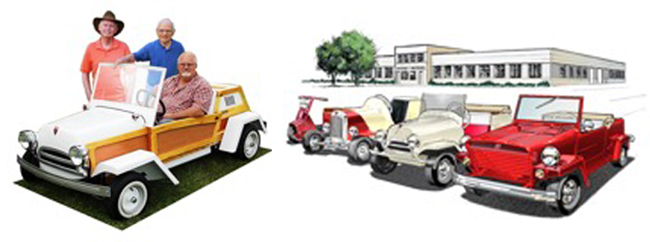
Athens, Ohio — The last King Midget was built in 1970, just before the first energy crisis. The little car, had it survived, might have gone on to bigger success than in its heyday — the 1950s.
Claud Dry and Dale Orcutt developed clever designs as well as production and marketing systems that no one has been able to replicate, including the automotive and financial experts who bought Midget Motors. In the years since Midget Motors failed, many attempts have been made to repeat the success of the founders—and offer a small, efficient car that’s affordable, as well as fun to own and drive. None have succeeded.
About one-fourth of the 5,000 King Midgets ever built have been preserved, restored or modified. Every year members of the International King Midget Car Club rescue a few more from moldering away in sheds and barns.
Around 2006 members of the club drew plans for the scarcest King Midget, the Model 1. The intent was to assist in proper restoration of the few that remain. Quite a few fans used those plans to build reproductions of the little classic. As with the original Model 1, that led to requests for plans to reproduce the Model 2 — a more challenging project.
In 2016, a team of Club members built a prototype of a brand new King Midget, called “The Club Special”. It’s almost as easy to build as the Model 1, but seats two passengers and has the look of the Model 2. Every step of the construction has been documented, with plans and specifications available.
At the 2016 King Midget Jamboree in Athens, Ohio, on Aug. 11 to 13, the brand new King Midget “Club Special” wasintroduced. Plans are available from Olde Milford Press to enable fans with a home workshop and craft skills to build a version of their own, at a cost of just $2,000 for materials.
The new car looks like an original King Midget, has far better performance, and is all new from the ground up. This was a not-for-profit Club project, created with private funds, by and for King Midget fans, and no production of the vehicle is anticipated. It’s a brand new start, using the same approach as Claud Dry and Dale Orcutt used 70 years ago—an itch to create a super efficient little car and get a few of them on the road.